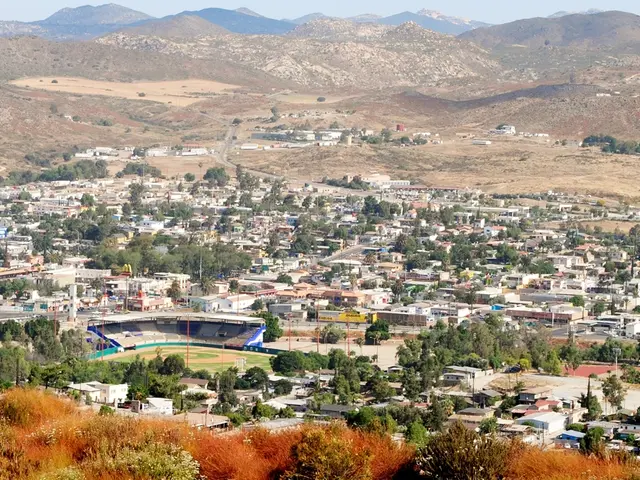Ancient Roadway Unearthed in Turkey, with Roots Stretching Back almost 10,000 Years
In the heart of the Kayseri Province, Turkey, archaeologists led by Lutz Fiedler have unearthed a remarkable settlement dating back to the Neolithic period around 7400 BCE. This site, known as Canhasan 3, has revealed one of the oldest known roads, offering a significant insight into early human settlement organization and infrastructure development.
Canhasan 3 stands out as a unique find, with its layout revealing an apparent presence of deliberate pathways and open spaces between houses. This architectural arrangement, more open than what was previously thought to emerge only in later settlements, challenges the assumption that early settlements were limited to tightly clustered homes.
The discovery of an early street at Canhasan 3 suggests that its residents may have had a sophisticated understanding of spatial organization. The gaps between homes could have functioned as passageways, protective corridors for livestock, or even as an early form of a street. This finding reflects an experimental approach to village planning, with social and functional considerations that are strikingly advanced for this historical period.
Comparing Canhasan 3 to the well-known Çatalhöyük settlement highlights the diversity in architectural approaches during the Neolithic period. The structural organization of Canhasan 3 differs significantly from Çatalhöyük, offering a unique opportunity to explore early human social structures.
Excavations at Canhasan 3 have uncovered various artifacts such as stone tools, pottery fragments, and animal remains, providing further evidence of its significance in reshaping our understanding of early human settlements.
The layout of Canhasan 3 suggests that the early inhabitants might have prioritized communal pathways, animal management, or practical access in ways that were not evident in other contemporary settlements. This discovery could reshape our understanding of early human settlements, challenging long-held assumptions about the simplicity of Neolithic village layouts.
Canhasan 3, dating back nearly 10,000 years, reveals an unprecedented level of urban planning and spatial organization for its time. The findings at this site offer valuable insights into the early development of urban planning and spatial organization, contributing significantly to our understanding of human history.
Read also:
- Understanding Hemorrhagic Gastroenteritis: Key Facts
- Stopping Osteoporosis Treatment: Timeline Considerations
- Tobacco industry's suggested changes on a legislative modification are disregarded by health journalists
- Expanded Community Health Involvement by CK Birla Hospitals, Jaipur, Maintained Through Consistent Outreach Programs Across Rajasthan








